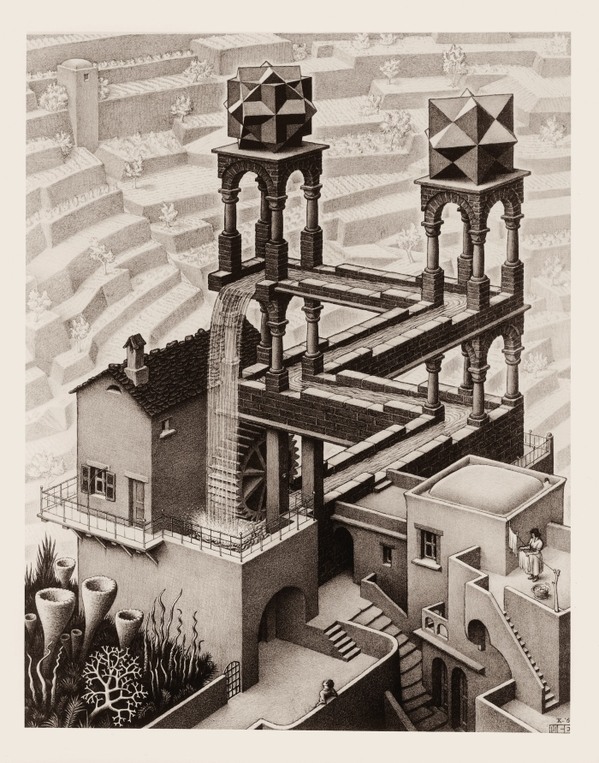breakthrough in spain
When Italian fascism gets too close, the Escher family moves to Switzerland. Maurits, however, becomes deeply unhappy about the shapeless, snow-covered mountains. He wants to travel again.
When Escher lives in Switzerland, he longs for the sea. He asks an Italian shipping company if he and Jetta can sail on their cargo ships for two months. They leave for Spain by freighter. In return, the shipping company will later receive a number of prints for which he will make the drawings en route. Maurits experiences the boat trip in tumultuous Europe as an 'oasis of peace'. Melancholy, he says goodbye to the ship.
In Spain he visits the Alhambra in Granada. Although Maurits has been there before, he now looks at the richly decorated palace with new eyes. The complex geometric patterns, with their timeless, endless repetition hit him like sledgehammer blows. For days he copies the Arabic motifs in the palace.
It is the last step towards the inventive images that will make Escher famous. Maurits' work shifts from landscapes to 'image thoughts'.
inner worlds
“Italy, the landscape, the people, they mean something to me. Not Switzerland and much less Holland,' Escher explains in 1968. After a period in Switzerland and Belgium, he returned to the Netherlands due to the outbreak of the Second World War. They move into a house in Baarn in 1941, but the house of the Escher family is requisitioned by the Germans in 1943. They find asylum and are taken care of in 'villa Ekeby' by a befriended bank manager D.W.H. Patin. Despite his homesickness for Italy, he continues to live in Baarn for the rest of his life.
The landscape is no longer his primary source of inspiration. Now Escher turns his gaze to his inner world. He starts by making 'regular tessellations' that grow into complex mathematical images. His love for surprising perspectives and reflections results in the creation of impossible worlds.
This 'new Escher' is catching on. He has exhibitions in leading museums and publications in international magazines. His iconic works will endear him to this day.
peace and regularity
As the years go by, Escher's work becomes more and more conceptual. In his latest prints he mainly focuses on the beauty of the laws of nature. In the work he shows 'a clean, ordered world', in which harmony and regularity are paramount.
Meanwhile, Escher tirelessly explains his work to others. He turns out to be a glowing speaker and writes about his theories. He also corresponds with mathematicians, although he explicitly does not see himself as a mathematician.
He is so busy making reprints, business correspondence, exhibitions and commissions that he hardly ever gets around to making new work. In the last decade of his life he made only ten new prints.
Escher spent his last years in the Rosa Spierhuis in Laren, a nursing home for artists and scientists. At the age of 73, Escher dies in the Diakonessenhuis in Hilversum.







